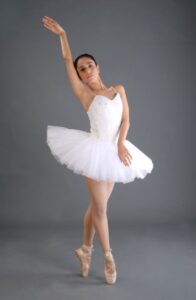BREAK DANCING LITERALLY!

We all love to dance till it is fun and entertaining but, when it comes to taking it too seriously some teachers and students push it beyond boundaries and that is when it becomes a break dance factually, there are some killer dance moves, quite literally in all dance forms. Be it Indian classical dance, folk dance or even western dances like ballet and Hip Hop, all have a few killer moves which have destroyed the career of upcoming dancers.
In a recent study by the Chinese Orthopaedic Association, it was revealed that the percentage of spinal cord injuries caused by the backbend exploded from just 4 per cent between 1992 and 2002 to a whopping 33.9 per cent between 2015 and 2023. The backbend, which is a crucial move in the Chinese folk dance, is the main cause of these injuries in dancers as young as five and above. Seeing this report I got curious and spoke to some dance experts about the killer dance moves:
Sangeet Natak Akademy Awardee, Bharatnatyam Guru Deepak Mazumdar says, “In Indian classical dance, dancers develop spine, knee and neck injuries, as the dance has many horizontal moves of the spine. This many a times result dancers giving up dancing. In olden days’ cow dung was used on floor which gave a cushioning effect for dancers but, in today’s times we don’t have good floor to dance on, cement, tile or stone floors are not suitable for dancing bare foot this can also be a major reason for injuries for dancers. If a dancer strictly follows the kinetics and science of body and dance all injuries can easily be avoided.”
Dong Daier, an instructor at Beijing Dance Academy warned parents and instructors, “In China, in some of our folk dances backbend is a compulsory dance move and is often performed to showcase a dancer’s skills. To master this backbend, teachers tend to get very strict with their pupils, it is not recommended that dance instructors apply external pressure to a child’s lower back, especially for children between the ages of 4 and 6. The teachers must be aware that it is a risky move. It is alarming to now that since 2015 over 1000 dancers have got paralysed doing the backbend and other dance moves in dance classes.”
Doctors have advised that while children’s spines are very flexible, the same cannot be said for their spinal cords. “A newborn’s spine can be stretched and lengthened by up to one or two inches without rupturing. However, the spinal cord can only withstand about a quarter inch. Dancers must try and pressurise the body as to what nature has given us and do what is necessary. Over doing anything against the nature of the body is never recommended if a dancer wishes to dance for a long duration,” said Dr Atul Wankhede, Orthopedics surgeon at Nanavati Hospital, who is also a renowned Handpan artist, he adds “Dancers who suffer spinal cord injuries or any other injury while practicing the backbend, headstand or any other move have a four-hour “golden window” to seek medical help but often don’t realise the extent of their injury because the initial symptoms are only mild pain and discomfort. So always be safe if you have a vision to dance for a life time.”
Ashutosh Arya, a hip hop and contemporary dance teacher says, “In modern dances many students suffer neck and back injuries due to lack of awareness on how to do the right move, unfortunately you tube and google is the guru for most modern dancers in India and the teachers too are not aware of the right techniques. I see dancers practice at the beach without help and guidance which results in multiple and long lasting injuries.”
Dr Uma Rele, Principal, Nalanda Nritya Kala Mahavidyalaya says, “At our institute we insist on proper techniques of dance, in Bharatnatyam for instance adavus and aramandi can cause severe knee issues of not done correctly, in Kathak banging of the foot on the floor to reach to sum may cause foot, ankle and knee problems too. In Odissi dance too to achieve the Tribhang move is extremely challenging and needs years of practise to master it and can cause a lot of spine and neck problems. The only option for it is not to overdo any movement, not to push one’s body beyond a certain limit to avoid any repercussion in the body and any ligament tear of tissues.”
Padmashree Gulabo Sapera, the renowned Kalbeliya artist said, “Like Chinese dances, Kalbeliya too has many back bending moves, picking up a handkerchief or a ring while doing a backbend is a common practise, but we have to rehearse it with extreme care. Strength of the breath, feet, legs, core, the entire body is used to bend backwards and to come up too. It is important not to push oneself and more importantly follow the guidelines in which a dance learning has to progress by using the scientific way in which such complex moves can be done and under a good trained master and not learn from the videos. It is important to have good coordination of stabilizing muscles and comes from deep breaths. The entire central nervous system is important, the diaphragm, pelvic floor, and transverse abdominis, which work together to create internal pressure and helps to bend backwards without injuries.”
Ava Bharucha, a renowned Ballet dancer said, “I feel Ballet is the most injury prone dance in the world, because we totally go against the gravity, always leaping upwards and landing on the toes that causes severe spinal, lower back, hip and foot injuries, there have been instances of dancers breaking all their ten toes due to the excess pressure on the foot. To add to that lack of good and nutritious diet makes the situation worst. Professional ballet dancers do push their bodies beyond its limits which causes these issues that last a lifetime. I simply call it professional hazards.”
Sandip Soparrkar holds a doctorate in world mythology folklore from Pacific University USA, an honorary doctorate in performing arts from the National American University, He is a World Book Record holder,
a well-known Ballroom dancer and a Bollywood choreographer who has been honored with three
National Excellence awards, one National Achievement Award and Dada Saheb Phalke award
by the Government of India. He can be contacted on sandipsoparrkar06@gmail.com





